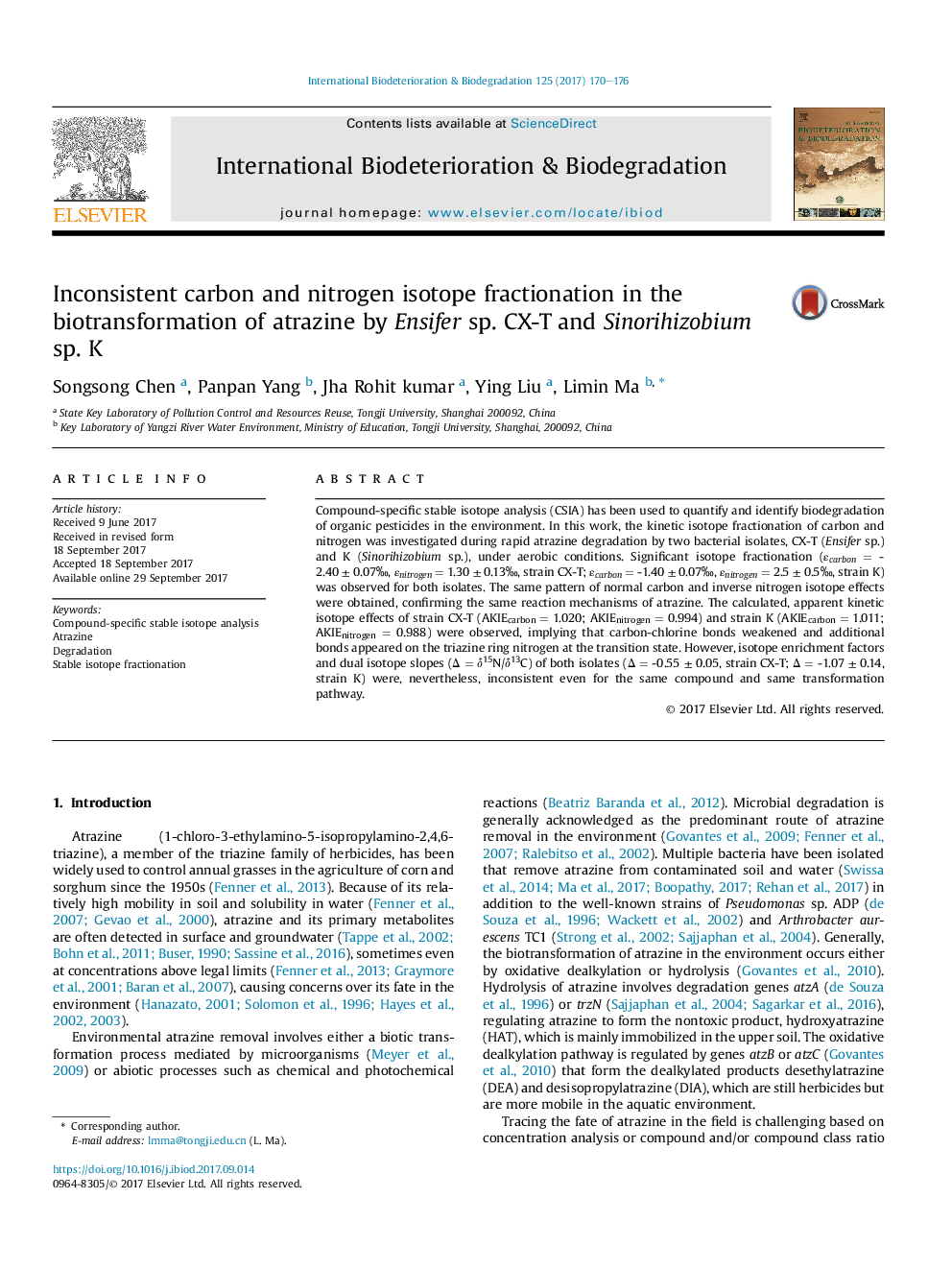| Article ID | Journal | Published Year | Pages | File Type |
|---|---|---|---|---|
| 5740302 | International Biodeterioration & Biodegradation | 2017 | 7 Pages |
â¢Significant isotope effect was observed in atrazine degraded by two bacteria.â¢Normal carbon and inverse nitrogen isotope effects was found of both bacteria.â¢Inconsistent dual isotope slope was observed even for same pathway of both bacteria.
Compound-specific stable isotope analysis (CSIA) has been used to quantify and identify biodegradation of organic pesticides in the environment. In this work, the kinetic isotope fractionation of carbon and nitrogen was investigated during rapid atrazine degradation by two bacterial isolates, CX-T (Ensifer sp.) and K (Sinorihizobium sp.), under aerobic conditions. Significant isotope fractionation (εcarbon = -2.40 ± 0.07â°, εnitrogen = 1.30 ± 0.13â°, strain CX-T; εcarbon = -1.40 ± 0.07â°, εnitrogen = 2.5 ± 0.5â°, strain K) was observed for both isolates. The same pattern of normal carbon and inverse nitrogen isotope effects were obtained, confirming the same reaction mechanisms of atrazine. The calculated, apparent kinetic isotope effects of strain CX-T (AKIEcarbon = 1.020; AKIEnitrogen = 0.994) and strain K (AKIEcarbon = 1.011; AKIEnitrogen = 0.988) were observed, implying that carbon-chlorine bonds weakened and additional bonds appeared on the triazine ring nitrogen at the transition state. However, isotope enrichment factors and dual isotope slopes (Π= δ15N/δ13C) of both isolates (Π= -0.55 ± 0.05, strain CX-T; Π= -1.07 ± 0.14, strain K) were, nevertheless, inconsistent even for the same compound and same transformation pathway.
Graphical abstractDownload high-res image (252KB)Download full-size image
